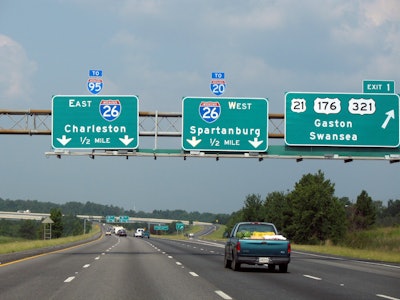
Research done by the TRIP report, “South Carolina Transportation by the Numbers: Meeting the State’s Need for Safe and Efficient Mobility,” discovered that throughout South Carolina, 46 percent of major roads and highways are in poor condition, a significant increase from 2008 when 32 percent of the state’s major roads were rated in poor condition. The report found that one-fifth of South Carolina’s bridges are structurally deficient or functionally obsolete. The state’s major urban roads are becoming increasingly congested, with drivers wasting significant amounts of time and fuel each year.
Worst of all, South Carolina is tied with West Virginia for the highest overall traffic fatality rate in the nation.
Driving on deficient roads costs each South Carolina driver as much as $1,250 per year in the form of extra vehicle operating costs (VOC) as a result of driving on roads in need of repair, lost time and fuel due to congestion-related delays, and the cost of traffic crashes in which roadway features likely were a contributing factor. The TRIP report calculated the cost to motorists of insufficient roads in South Carolina’s largest urban areas: Charleston, Columbia and Greenville-Spartanburg-Anderson.
 A breakdown of the costs per motorist in each area along with a statewide total.
A breakdown of the costs per motorist in each area along with a statewide total.
The TRIP report finds that 46 percent of South Carolina’s major roads and highways (state-maintained Interstate, primary and secondary routes) have pavements that were rated in 2014 as being in poor condition, while an additional 38 percent were in fair condition and 16 percent were in good condition. Driving on deteriorated roads costs South Carolina motorists an additional $1.1 billion each year in extra vehicle operating costs, including accelerated vehicle depreciation, additional repair costs, and increased fuel consumption and tire wear.
Traffic congestion is worsening throughout the state, costing drivers a total of $775 million annually in lost time and wasted fuel.
“The South Carolina Department of Transportation manages the 41,000 miles of state funded roads with the third lowest motor fuel user fee in the nation. With an estimated additional $1.5 billion needed per year for the next 25 years to “get to good”, they are currently having to do the best they can with what they have,” said Eric Dickey, vice president of Davis & Floyd, Inc. and chairman of the South Carolina Alliance to Fix Our Roads (SCFOR).
Related News:
Arkansas drivers spending $2 billion annually
Deficient roads cost Alabama drivers $3.1 billion
A total of 21 percent of South Carolina’s bridges show significant deterioration or do not meet modern design standards. The report found 11 percent of South Carolina’s bridges to be structurally deficient, with significant deterioration to the bridge deck, supports or other major components. An additional 10 percent of the state’s bridges are functionally obsolete, which means they no longer meet modern design standards, often because of narrow lanes, inadequate clearances or poor alignment.
South Carolina’s overall traffic fatality rate of 1.76 fatalities per 100 million vehicle miles of travel is the highest in the nation (tied with West Virginia) and significantly higher than the national average of 1.13. Traffic crashes in South Carolina claimed the lives of 4,315 people between 2008 and 2012. The fatality rate on South Carolina’s rural roads was 2.99 fatalities per 100 million vehicle miles of travel in 2012, which is 61 percent higher than the national rural road average of 1.86 fatalities per 100 million miles.
Unfortunately, the conditions of roads and bridges across South Carolina are not expected to improve until more funding can be secured.
“These conditions are only going to get worse if greater funding is not made available at the local, state and federal levels,” said Will Wilkins, TRIP’s executive director. “Congress can help by approving a long-term federal surface transportation program that provides adequate funding levels, based on a reliable funding source. If not, South Carolina is going to see its future federal funding threatened, resulting in fewer road and bridge repair projects, loss of jobs, and a burden on the state’s economy.”












